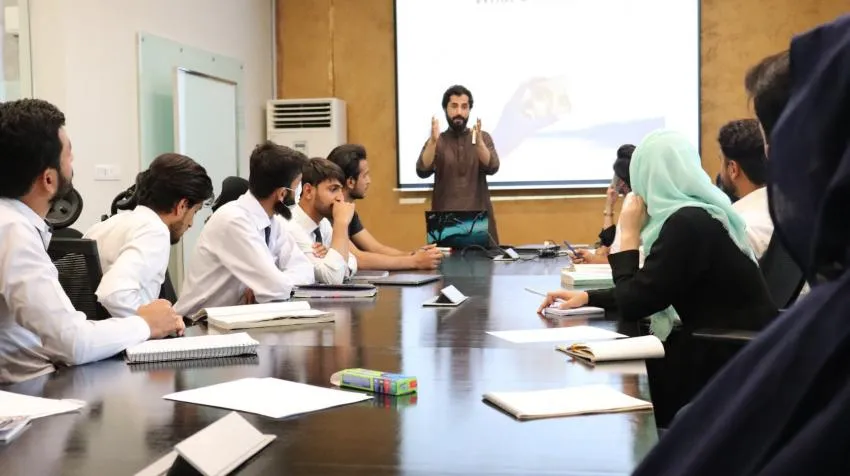Introduction
Pakistan, a country with a rich history and diverse culture, is undergoing a remarkable transformation. At the heart of this transformation is the National Vocational and Technical Training Commission (NAVTTC), which has been spearheading the country’s shift toward a more skilled workforce. As Pakistan strides toward economic growth and development, NAVTTC plays a crucial role in shaping the future of its human capital. With a vision set to positively impact the country by 2025, NAVTTC’s efforts are driving innovation, enhancing employability, and empowering individuals across Pakistan.

This article will delve into how NAVTTC is fostering skills development, the impact it has had so far, and how it is set to change the landscape of Pakistan’s workforce by 2025. Apply for NAVTTC Courses here.
Key Points Overview
- The Role of NAVTTC in Pakistan’s Workforce Development
- Impact on Youth Employment and Economic Growth
- NAVTTC’s Collaboration with Private Sector and International Organizations
- NAVTTC’s Focus on Digital Skills and Technology
- Challenges and Future Prospects for NAVTTC by 2025
Detailed Discussion
1. The Role of NAVTTC in Pakistan’s Workforce Development
The National Vocational and Technical Training Commission (NAVTTC) was established to streamline and improve the vocational and technical education system in Pakistan. The primary aim of NAVTTC is to enhance the employability of the country’s youth by providing them with the skills necessary for the modern job market.
In a country where unemployment rates, especially among the youth, have been a growing concern, NAVTTC’s efforts in vocational training and skill development are a beacon of hope. It operates by establishing training centers, offering certifications in various fields, and collaborating with industries to ensure that the training provided aligns with market demands.
NAVTTC’s mission revolves around equipping individuals with relevant, industry-recognized skills that help them secure better employment opportunities. This focus on enhancing practical skills rather than traditional academic knowledge has made a considerable impact on the country’s workforce development.
2. Impact on Youth Employment and Economic Growth
By 2025, NAVTTC’s contributions to youth employment will have a lasting impact on Pakistan’s economy. A significant number of Pakistan’s population is young, with over 60% of people under the age of 30. This demographic dividend can only be fully utilized if these young individuals are equipped with marketable skills that meet the needs of businesses.
NAVTTC offers programs that specifically target high-demand sectors such as construction, information technology, healthcare, and manufacturing. These sectors are integral to Pakistan’s economic development, and by focusing on them, NAVTTC is ensuring that the youth has a stake in the country’s future prosperity. The initiative also aims to tackle the skill gap by offering training in both soft and hard skills, improving the employability of graduates across various industries.
NAVTTC’s partnerships with local industries are further helping in this endeavor. By aligning training programs with industry requirements, NAVTTC ensures that there is a steady supply of skilled workers to meet the demand for labor, thus driving economic growth.
3. NAVTTC’s Collaboration with Private Sector and International Organizations
One of NAVTTC’s key strategies for success is its collaboration with the private sector and international organizations. These partnerships play a crucial role in ensuring that vocational training aligns with real-world job requirements. By working with international bodies like the International Labour Organization (ILO) and the German Development Cooperation (GIZ), NAVTTC enhances the quality of its training programs and ensures that the skills being taught are globally recognized.
The private sector is equally important in this equation, as it provides the platform for NAVTTC-trained graduates to enter the workforce. Many companies are partnering with NAVTTC to create tailored training programs that reflect the latest trends and technologies in their respective industries. This collaboration ensures that both parties benefit: businesses gain access to a pool of skilled workers, and youth gain the skills needed to thrive in these businesses.
4. NAVTTC’s Focus on Digital Skills and Technology
In the era of rapid technological advancements, it is critical that Pakistan’s workforce is equipped with digital skills. NAVTTC has embraced this challenge by incorporating digital literacy and technology-based training into its curriculum. By 2025, NAVTTC will have trained thousands of individuals in emerging fields such as artificial intelligence, data science, and digital marketing.
The push for digital skills is crucial, as Pakistan’s job market is increasingly shifting toward tech-driven roles. By focusing on skills that are in high demand globally, NAVTTC is ensuring that Pakistani youth remain competitive in an increasingly digital world.
Furthermore, the rapid expansion of online platforms and e-commerce in Pakistan has created numerous opportunities for tech-savvy professionals. NAVTTC is responding to these trends by developing specialized programs for individuals interested in working in the digital space.
5. Challenges and Future Prospects for NAVTTC by 2025
While NAVTTC’s impact on Pakistan’s workforce development is clear, it faces several challenges that need to be addressed to realize its vision fully. These challenges include:
- Infrastructure and Access: While training centers have been established across the country, access to these centers remains limited in rural areas. To address this, NAVTTC must expand its reach and ensure that quality training is available in every corner of Pakistan.
- Curriculum Relevance: As industries evolve and new fields emerge, NAVTTC must ensure that its curriculum remains relevant. Continuous collaboration with businesses and tech experts will be vital to keeping training programs up-to-date.
- Funding and Resources: Expanding and upgrading training programs will require significant investment. NAVTTC will need to secure more funding, both from the government and private sector, to ensure that its training programs remain accessible and impactful.
By 2025, if these challenges are overcome, NAVTTC could very well be the key player in transforming Pakistan’s labor force, ensuring economic growth, and uplifting the nation’s youth.
Conclusion
NAVTTC’s work in Pakistan has already shown the power of vocational and technical training in transforming lives. By equipping the youth with the skills they need to succeed in the workforce, NAVTTC is not only boosting employment rates but also creating a more skilled and productive economy. As Pakistan moves towards 2025, the continued support of the government, the private sector, and international organizations will be crucial in realizing NAVTTC’s full potential.
By fostering collaboration, investing in digital skills, and overcoming infrastructure challenges, NAVTTC is set to continue its transformative role in shaping the future of Pakistan’s workforce. The vision of a prosperous and skilled Pakistan is within reach, and NAVTTC’s efforts will be central to making this vision a reality.
FAQs
Q1: What is NAVTTC?
A1: The National Vocational and Technical Training Commission (NAVTTC) is a Pakistani government agency responsible for promoting vocational and technical education in Pakistan. It works to enhance the employability of individuals through skills training programs aligned with market needs.
Q2: How does NAVTTC impact youth employment in Pakistan?
A2: NAVTTC impacts youth employment by offering training programs that equip individuals with marketable skills, which improves their chances of securing stable jobs. This helps bridge the skill gap and reduces unemployment among the youth.
Q3: What types of skills are taught by NAVTTC?
A3: NAVTTC offers training in a wide range of fields including construction, healthcare, IT, digital marketing, and data science. The focus is on both soft and hard skills relevant to today’s job market.
Q4: How does NAVTTC collaborate with industries?
A4: NAVTTC partners with both the private sector and international organizations to ensure that its training programs are aligned with industry demands. This collaboration helps produce a skilled workforce that meets the needs of the job market.
Q5: What is the future of NAVTTC by 2025?
A5: By 2025, NAVTTC aims to have trained a substantial portion of Pakistan’s youth, improving their employability and driving economic growth. It also focuses on expanding its digital skills training to keep up with global technological trends.







